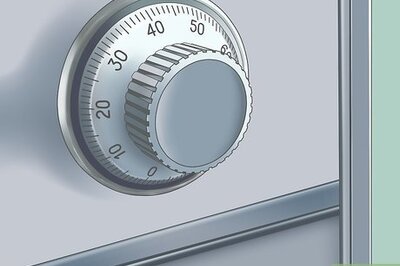
views
Steeply falling revenues and central grants amidst rising expenditure to fight the coronavirus pandemic led to 18 of the largest states reporting a collective revenue deficit of 285 per cent of Budget Estimates in April-June as against 12.9 per cent a year ago, as per a report by India Ratings (Ind-Ra). The collective fiscal deficit of the 18 states stood at 40.7 per cent of Budget Estimates (BE) in Q1 as against 13.4 per cent a year ago, the report said.
The pandemic-induced lockdowns, resultant loss of business and fall in tax collections have forced states to borrow at almost 10 per cent. While their revenues have plunged, expenses have only gone up. The Centre's refusal to pay GST dues on time further aggravated the pain of the states. The collective revenue expenditure of the 18 states grew 11.7 per cent in Q1, the report said.
Revenue expenditure showed significant variations across states. Although it rose significantly for majority of the states, a few of them like Chhattisgarh, Jharkhand, Odisha, UP and Gujarat could compress it, the report added. Collectively, the 18 states reduced their expenditure on salary and pension by 10.5 per cent and on subsidies by 39.9 per cent, but expenditure on public health/administrative measures pushed 'other expenditure' higher by 40.1 per cent.
All these led to combined revenue deficit rising to a massive 285 per cent in Q1 as against 12.9 per cent a year ago and fiscal deficit at 40.7 per cent of BE as against 13.4 per cent a year ago, Ind-Ra said. The collective capex of the 18 states was down by 41.9 per cent in the quarter. Among the major states, Andhra Pradesh, Himachal Pradesh and Kerala maintained capex growth even amid the pandemic, it added.
States have been under significant stress both on revenue and expenditure sides. However, they sparingly availed of the Reserve Bank's special liquidity windows (special drawing facility/ways and means advances/overdraft) to tide over the fiscal crisis, the report said. The states relied on expenditure compression, devolution from the Centre and higher market borrowings to remain fiscally afloat, it added.
States that used RBI's special liquidity window so far this fiscal are either those which have been using these facilities even in FY20 or earlier due to perpetual liquidity issues such as Andhra, Punjab, Kerala, Himachal, Telangana, Bengal, or smaller states such as Nagaland, Manipur and Mizoram. Larger states like Maharashtra, Bihar, Tamil Nadu, Uttar Pradesh, Madhya Pradesh, Rajasthan, Karnataka, Jharkhand and Odisha did not use the liquidity window at all in the first quarter.
Revenue receipts of the states were collectively 18.41 per cent lower year-on-year. However, there was a significant variation among the states. Except Himachal, Chhattisgarh, Nagaland and Odisha, all other states saw a higher double-digit reduction in their revenue receipts in Q1, the report said. Few states such as Andhra, Meghalaya, Sikkim, Tripura and Uttarakhand witnessed higher revenue receipts.
In general, own tax and own non-tax revenue of all states was lower, while the share in Central taxes was nearly at the same level. In general, a lower receivable should elicit lower expenditure. However, given the severity of impact of the pandemic on life, livelihoods, economy and public health, the states had very little choice, it said.
While the expenditure cut on salary and pension was more pronounced in case of Tamil Nadu, Kerala and Nagaland, the reduction is subsidy was more pronounced in case of Chhattisgarh, Haryana, Jharkhand, and Uttarakhand. Although most states saw significantly higher revenue deficit, a few of them like Odisha, Jharkhand, Himachal and Uttarakhand had revenue surplus during the quarter.
While Odisha attained it by cutting revenue expenditure aggressively, Uttarakhand did it through buoyancy in revenue receipts.




















Comments
0 comment